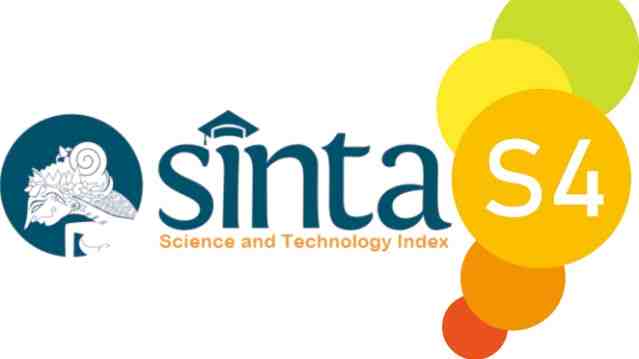Types of Ferns (Pteridophyta) in the Oil Palm Plantation Area, Rambahan Village, Pasaman Regency as a Contribution of Teaching Materials to Biodiversity Material Phase E SMA/MA
https://doi.org/10.25273/florea.v12i1.21798
Keywords:
pteridophyta, Fern Diversity, Book, Teaching Material, Rambahan VillageAbstract
Ferns are a division of plants that are distinctly characterized by three primary parts: roots, stems, and leaves. However, ferns do not produce seeds. In Rambahan Village, located in Pasaman Regency, there are privately managed oil palm plantations that are often overrun with ferns, some of which have become weeds to the oil palm crops. The specific species of these ferns remain unidentified by the local community. This study aimed to identify the species of ferns in the oil palm plantations of Rambahan Village and to produce a book as a contribution to biodiversity education materials. The research, conducted from August to September 2024, was descriptive in nature and employed an exploratory survey method. Results revealed the presence of 19 fern species (Pteridophyta) in the plantation area, including Vittaria costata, Adiantum latifolium, Vittaria lineata, Davallia denticulata, Oleandra neriiformis, Phymatosorus scolopendria, Goniophlebium percussum, Tectaria fuscipes, Asplenium dimidiatum, Asplenium nidus, Thelypteris palustris, Nephrolepis biserrata, Nephrolepis cordifolia, Stenochlaena palustris, Dryopteris filix, Dryopteris carthusiana, Diplazium esculentum, Selaginella plana, and Lygodium palmatum. The resulting book serves as an educational contribution to biodiversity studies.
Downloads
References
Tjitrosoepomo, G. (2009). Taksonomi Tumbuhan (Schizophyta, Thallophyta, Bryophyta, Pteridophyta). Yogyakarta: Gadjah Mada University press.
Sastrapradja, S., Afriantini, J.J. (1980). Kerabat Paku. Lembaga Biologi Nasional: Jakarta
Tjitrosoepomo, G. (2011). Morfologi Tumbuhan. Yogyakarta: Gadjah Mada University press.
Steenis van, C. G. G. J., Bloembergen, S., Eyme, P. J. 2013. Flora Untuk Sekolah Di Indonesia. Mataram Jakarta Timur: PT Balai Pustaka (Persero).
Sianturi, Rizky, A. S., Retnoningsih, A., & Ridlo, S. (2020). E-Book Eksplorasi Tumbuhan Paku (Pteridophyta) di Wilayah Ketinggian yang Berbeda. Lppm Universitas Negeri Semarang, Semarang.
Yunita, I., Nurma, Ibrahim, & Andalia, N. (2021). Identifikasi Jenis-Jenis Tumbuhan Paku (Pteridophyta) Yang Tumbuh Di Desa Uning Pune Kecamatan Putri Betung Kabupaten Gayo Lues. Jurnal Biology Education,9(1),51–67. https://doi.org/10.32672/jbe.v9i1.4519
Sofiyanti, N. & Mayta, N. I. (2018). Kajian Morfologi dan Mikromorfologi (Sisik serta Trikoma) 4 Jenis Pyrrosia Mirb. (Polypodiaceae) di Provinsi Riau. Jurnal Biologi Tropis, 18(2), 174-181. DOI: 10.29303/jbt.v18i2.857
Holttum, R.E. (1966). A Revised Flora of Malaya: Volume II Ferns of Malaya. Singapore: Government Printing Office.
Sylvestre LS, Costa TV & Lino VL (2023) Aspleniaceae in Flora e Funga do Brasil. Jardim Botânico do Rio de Janeiro.
Sofiyanti, neri. (2013). “Keanekaragaman Jenis Paku Epifit yang Tumbuha pada Batang Kelapa Sawit (Elaeis guineensis jacq.) di Pekanbaru, Riau”. Jurnal Biologi, 17(2). 51-55.
Romaidi, Maratus, S., & Budi, M. E. (2012). Jenis-Jenis Paku Epifit Dan Tumbuhan Inangnya Di Tahura Ronggo Soeryo Cangar. El - Hayah, 3(1), 8–15. https://doi.org/10.18860/elha.v3i1.2221
Batta, K. L. H., & Triyoso, A. (2022). Identifikasi Dryopteris Sp Di Lingkungan Universitas Pendidikan Muhammadiyah (UNIMUDA) Sorong. Biolearning Journal, 9(2), 21–25.
Nuraini, A.M., dan Wisanti. (2022). “Filicinae Taxonomic Diversity in the Tourism Area of Tretes Waterfall Wonosalam Kabupaten Jombang”. Jurnal Riset Biologi dan Aplikasinya, 4(2), 57-68 https://doi.org/10.26740/jrba.v4n2.p57-68
A’tourrohman, M., Surur, M. A., Nabila, R. E., Rahmawati, S. D., Fatimah, S., Ma’rifah, D. N., & Lianah. (2020). Keanekaragaman Jenis Paku-Pakuan (Pteridophyta) dan Kajian Potensi Pemanfaatannya di Cagar Alam Ulolanang Kecubung The diversity of ferns (Pteridophyta) and their potential use studies in the Ulolanang Kecubung Nature Reserve. BIOEDUSCIENCE, 04(01), 73–81. doi: http://dx.doi.org/10.29405/j.bes/4173-814991
Arini, Diah Irawati D, & Julianus Kinho. 2012. “Keragaman Jenis Tumbuhan Paku (Pteridophyta) Di Cagar Alam Gunung Ambang Sulawesi Utara.” Info BPK Manado 2(1):17–40
Fitriasih, R., Ansori, I., & Kasrina. (2019). Pengembangan Booklet Keanekaragaman Pteridophyta di Kawasan Suban Air Panas Untuk Siswa SMA. Jurnal Pendidikan dan Pembelajaran Biologi, 3(1), 100-108. https://doi.org/10.33369/diklabio.3.1.100-108
KEMENDIKBUD. (2020). Modul Pembelajaran SMA Bahasa Indonesia: Analisis Buku Fiksi dan Nonfiksi Bahasa Indoneia. Direktorat SMA, Direktorat Jendral PUD, DIKDAS, dan DIKMEN.
Nugraheni, L. I., & Prabowo, C. A. (2022). Keanekaragaman Jenis Tumbuhan Paku (Pteridophyta) Di Sungai Gayam Desa Walen Kecamatan Simo Kabupaten Boyolali Jawa Tengah. Indonesian Journal of Biotechnology and Biodiversity, 6(3), 110–117. DOI: 10.47007/ijobb.v6i3.137
Putri, M. (2016). Eksplorasi Keanekaragamn Jenis Tumbuhan Paku Epifit dan Pohon Inangnya di Kawasan Hutan Gunung Bunder Taman Nasonal Gunung Halimun Salak (TNGHS) Bogor Jawa Barat. Skripsi Institusi Pertanan Bogor.
Tjitrosoepomo, G. (1986). Taksonomi Tumbuhan (Taksonomi Khusus). Jakarta: Brhatara karya aksara.
Downloads
Published
Issue
Section
License

This work is licensed under a Creative Commons Attribution-ShareAlike 4.0 International License.
Every accepted manuscript should be accompanied by "Copyright Transfer Agreement" prior to the article publication.
Florea : Jurnal Biologi dan Pembelajarannya by http://e-journal.unipma.ac.id/index.php/JF is licensed under a Creative Commons Attribution-ShareAlike 4.0 International License.
Author who publish with this journal agree to the following terms:
- Author not hold and retain copyright and grant the journal of first publication with the work simultaneously licenced under Creative Commons Atribution Licence that allows others to share the work with an acknowledgment of the work's authorship and initial publication in this journal.
- Authors are able to enter into separate, additional contractual arrangements for the non-exclusive distribution of the journal's published version of the work with an acknowledgment of its initial publication in this journal.
- Authors are permitted and encouraged to post their work online prior to and during the submission process, as it can lead to productive exchanges, as well as earlier and greater citation of published work.










